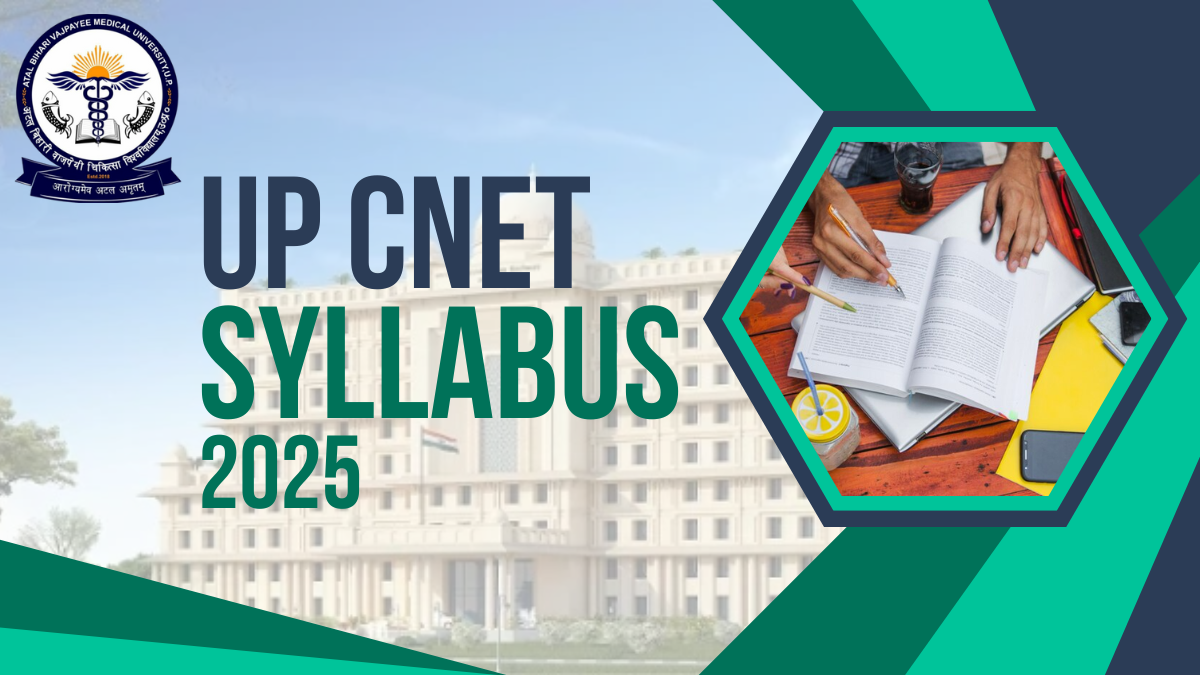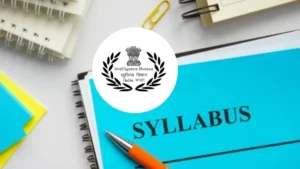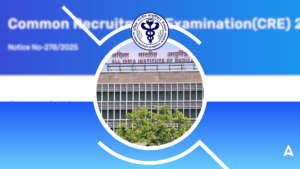With the exam date approaching on 21st May 2025, candidates must now shift their focus towards what truly matters, mastering the UP CNET syllabus. Conducted by Atal Bihari Vajpayee Medical University (ABVMU), Lucknow, the Common Nursing Entrance Test (CNET) opens doors to top nursing institutions like KGMU, SGPGIMS, and more. If you’ve already applied, the next big step is to prepare smartly by understanding the updated syllabus and exam pattern. This article will walk you through the important subject areas, exam structure, and topic-wise details you shouldn’t miss.
UP CNET Exam Pattern 2025
The UP CNET 2025 is designed to assess your proficiency across five key areas: Physics, Chemistry, Biology, English, and Nursing Aptitude. The exam is conducted in an offline mode using OMR sheets and is bilingual, offering questions in both English and Hindi. Here’s a snapshot of the exam pattern:
| UP CNET Exam Pattern 2025 | |
| Particulars | Details |
| Mode of Exam | Offline (OMR Based) |
| Duration | 140 minutes |
| Total Questions | 120 |
| Type of Questions | Multiple Choice Questions (MCQs) |
| Marking Scheme | +1 for each correct answer; No negative marking |
| Medium | Bilingual – English and Hindi |
| Sections | Physics, Chemistry, Biology, English, Nursing Aptitude |
UP CNET Syllabus 2025
The syllabus for UP CNET 2025 encompasses topics from the Class 12 curriculum, ensuring a comprehensive assessment of your knowledge base. Each subject carries equal weightage, emphasizing the importance of a balanced preparation strategy. Here’s a breakdown of the syllabus:
| UP CNET Syllabus 2025 | |
| Subject | Key Topics |
| Physics | Units & Measurements, Kinematics, Laws of Motion, Work, Energy & Power, Gravitation, Thermodynamics, Oscillations & Waves, Electrostatics, Current Electricity, Magnetism, Optics, Dual Nature of Matter, Atoms & Nuclei, Electronic Devices |
| Chemistry | Basic Concepts of Chemistry, Atomic Structure, Periodicity, Chemical Bonding, States of Matter, Thermodynamics, Equilibrium, Redox Reactions, Hydrogen, The s-, p-, d-, and f-Block Elements, Organic Chemistry (Hydrocarbons, Alcohols, Aldehydes, Ketones, Carboxylic Acids, Amines), Biomolecules, Polymers, Chemistry in Everyday Life |
| Biology | Diversity of Living Organisms, Structural Organisation in Animals and Plants, Cell Structure and Function, Plant Physiology, Human Physiology, Reproduction, Genetics and Evolution, Biology and Human Welfare, Biotechnology and Its Applications, Ecology and Environment |
| English | Comprehension, Error Detection, Synonyms & Antonyms, Idioms & Phrases, Proverbs, Sentence Rearrangement |
| Nursing Aptitude | Nursing Fundamentals, Medical-Surgical Nursing, Community Health Nursing, Mental Health Nursing, Pediatric Nursing, Obstetric and Gynecological Nursing, First Aid and Emergency Care, Nutrition and Dietetics, Communication and Interpersonal Skills, Nursing Ethics and Professionalism |




 OSSC CGL Syllabus 2026, Check Revised Ex...
OSSC CGL Syllabus 2026, Check Revised Ex...
 IB MTS Syllabus 2025, Tier 1 and Tier 2 ...
IB MTS Syllabus 2025, Tier 1 and Tier 2 ...
 AIIMS CRE Exam Date 2025, Check Tentativ...
AIIMS CRE Exam Date 2025, Check Tentativ...

 Adda247 Job portal has complete information about all Sarkari Jobs and Naukri Alerts, its latest recruitment notifications, from all state and national level jobs and their updates.
Adda247 Job portal has complete information about all Sarkari Jobs and Naukri Alerts, its latest recruitment notifications, from all state and national level jobs and their updates.



